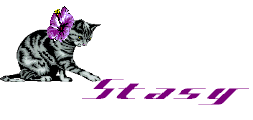


Here we have four releases on the Neu Harmony label, each of which explores a different direction of modern electronic music.

ARCANE: Thirty-Three and a Third (CD on Neu Harmony)
This CD from 2004 features 61 minutes of dark retro electronic music.
According to the myth, Arcane was a European EM band from the Seventies whose lead member was killed under politically questionable circumstances. After decades of languishing in dusty vaults, tapes of Arcane’s music are just now resurfacing to be appreciated by modern audiences. The truth behind that dark curtain: Arcane is Paul Lawler.
Airy electronics congregate with favorable disposition, fluttering on a flutish breeze that is peppered with spectral effects and trembling textures. As the music progresses, the tone grows darker, gloom spreading like a bloodstain across a formica floor, transforming that artificial plastic surface into an ancient and battle-scarred wooden plane. Pulsations function as rhythms, driving the melodies through the haunted forest. Synthetic chitterings sound from the twilight grove, punctuating a foundation that evokes a slightly heavenly air with symphonic breaths. Grittier riffs emerge to stride the pathway, guiding the audience deeper into a cemetery milieu.
Following the motif of the legend, this release features two long tracks as Side 1 and Side 2 of the “album.” Three extra tracks (each around 7 minutes long) flesh out the CD. These shorter pieces possess more exuberance than the long-form compositions, peppier and bouncier and decidedly less ominous in their overall sound.
Arcane’s music has a clever charm in that the music is often highly reminiscent of classic Tangerine Dream, but utilized in a highly spooky manner, breathing darkside life into the melodies.

THE OMEGA SYNDICATE: Analogue Waves CD on Neu Harmony)
This CD from 2004 features 75 minutes of expansive electronic music.
Deeply grounded electronic loops blend with pleasantly squealing expressions, generating a rich combination of both ends of the sonic spectrum. Atmospheric textures travel beyond the stratosphere, plunging into deep space and all the cosmic impressions that dwell out there.
Notably, however, these ethereal passages lead to explosions of more rhythmic substance, where the cycles spiral in on each other, creating lush riffs that glow with verve and enthusiasm. Waves of melody move in tandem, merging only to diverge as fresh entities. Expansion is tantamount in this music, constantly forging the impression that no limits exist and boundaries that appear constricting are merely barriers hiding virgin territories of the mind.
Percussion is not conventionally employed. Rhythms are simulated by rapidly generated electronic notes that occur with such proximity that they become beats of a non-impact nature.
The three tracks on this release expand in succession (19 minutes, 22 minutes, then 35 minutes), enabling the Omega Syndicate ample opportunity to explore all the tangents available in long-form composition.
As result of this, the music’s evolution from passage to passage is unhurried. Yet, the pace is often demonstrably more than passive as harmonies accrete power and vigor, delivering a tasty exposure to acceleration and mounting vitality.

OTARION: Faces of the Night (CD on Neu Harmony)
This CD from 2004 features 64 minutes of lively electronic music.
Horizon-sweeping harmonies are embellished by an impending surf of somber tonalities. Agile keyboards introduce lively riffs to this nocturnal soundscape, and continue to do so throughout this recording, rather relentlessly keeping the music energetic and full of pleasant surprises. Delicate chords waft like crystalline leaves carried on a determined wind. Surging diodes pepper this mix with a periodic dose of darker moods, balancing the overall jubilation with a touch of forbidding gravity. The use of harpsichord passages lends a pastoral edge to the tuneage, keeping the darkness at bay, giving the audience an excellent vantage of the demarcation line between day and twilight.
E-perc injects a certain pep, but the keyboards do a suitable job keeping the tempo high and enjoyable. Often, the notes roll out with such cyclic velocity as to approximate rhythms on their own. The conjunction of these tempos makes for exceptionally lively tuneage.
While for some, the night may evoke gloom and dread, Otarion delves into other, more optimistic aspects of the evening. Dreams are explored, as is dancing under a lunar spotlight. There are a few tracks that examine cimmerian nocturnal elements (such as nightmares and dark towers), but even these excursion into shadow produce a sense of strenuous idealism, reminding the listeners that a glorious morning is inevitable.

UNDER THE DOME: Wot No Colin? (CD on Neu Harmony)
This CD from 2004 features 74 minutes of extremely energized electronic music.
This time, Under the Dome’s Grant Middleton is joined by Steve Jenkins, Andy Bloyce (from Kubusschnitt), and Paul Nagle. (As the title implies, previous member Colin Anderson is absent.)
The music on this release was culled from performances at Hampshire Jam 2 on November 11, 2002 and the National Space Centre in Leicester on May 31, 2003.
Under the Dome is known for its high energy music, and this release is no different. The tuneage is vibrant and resolute. The pace is steadfast, constantly straining for faster delivery and hyperspatial content. Even the infrequent sedate passages convey an urgency barely restrained and eager to explode into lively disposition.
Lavish keyboards produce a swarm of breathless riffs, while technology transforms those nimble-fingered notes into sounds of utmost cosmic guise, running the gamut from flutish airs to blazing interstellar passion. Rapid-fire melodies converge to become sonic creatures of intense complexity, roiling and flaring with enthusiastic abandon. But that abandon is always guided by mercurial intention, steering the fiery conglomerate to ever more engaging pinnacles.
Bloyce’s guitar work adds a searing edge to this relentless fervor, producing outbursts that scorch no matter how high an altitude they achieve. The presence of “space guitar” has become a standard in the retro scene of electronic music, and Bloyce excels at fulfilling an audience’s wildest expectations.
Thumb’s up on all counts.

| Entire page © 2005 Matt Howarth. All rights reserved. |
Webpage design by
 |